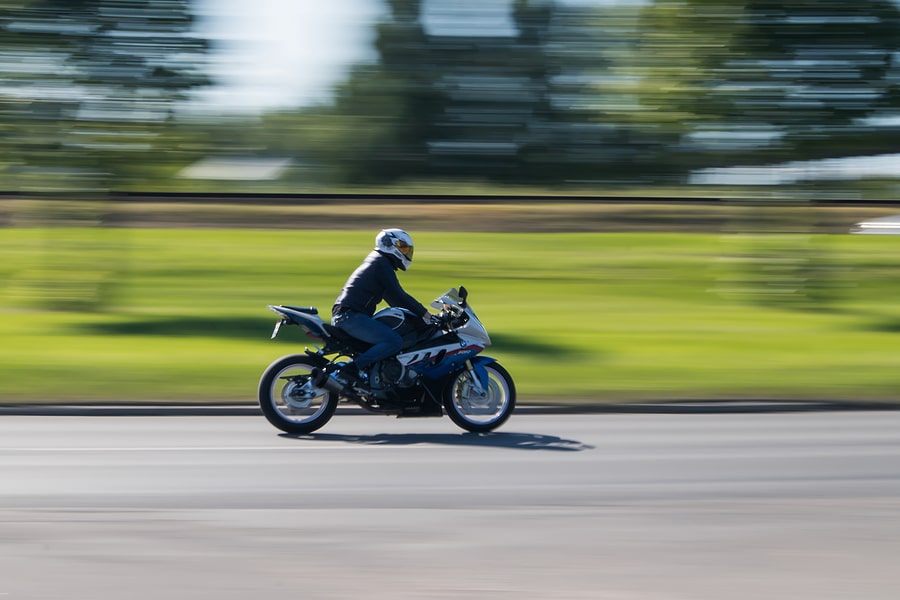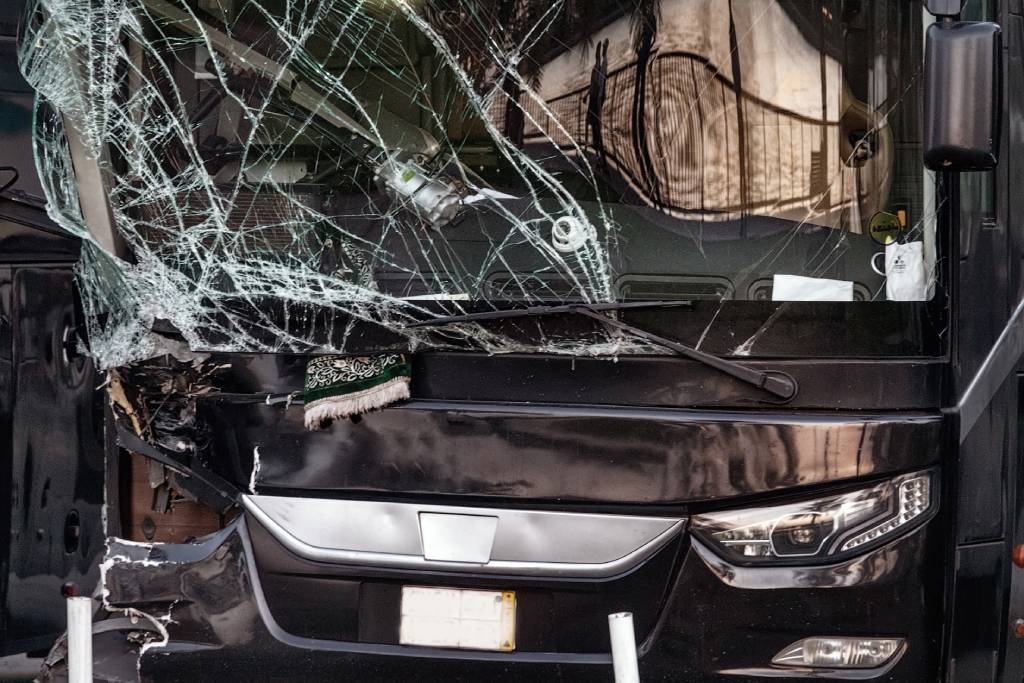Motorcyclists die at an alarming rate. In 2020, 5,579 motorcyclists died in crashes. This translated to over 15 motorcyclists dying per day. But some startling facts illustrate the size of this number.
Only 3 percent of the registered vehicles in the country are motorcycles. Yet motorcycle operators and passengers make up 14 percent of the traffic fatalities in the U.S.
Similarly, motorcycles rarely travel long distances. As a result, motorcycles only travel 0.6 percent of the total motor vehicle miles in the U.S. This means that motorcyclists are 23 times more likely to die in a motorcycle accident than they should, based on the number of registered motorcycles.
Read on to learn why motorcycle accidents often cause fatal injuries and how most motorcyclists die.
Types of Fatal Injuries Caused by Motorcycle Accidents
Most motorcycle accidents do not kill the rider. The California Highway Patrol (CHP) reported 566 deaths and 13,907 injuries from motorcycle accidents in its annual traffic crash report. In this report, motorcycle accidents caused 24.5 times more non-fatal injuries than fatal injuries.
When you look at all motorcycle accidents, the most common injuries happen to the arms and legs. These injuries often occur when the motorcycle goes into a slide. The rider’s leg gets trapped under the motorcycle. The motorcycle drags the motorcyclist with their leg and arm scraping along the road surface.
Common arm and leg injuries caused by this type of accident include road rash, broken bones, and lacerations.
But when you focus on fatal motorcycle accidents, the injuries change. Injuries to the arms and legs rarely cause death. Even in the extreme case of an amputation, paramedics and doctors can often save the motorcyclist’s life.
After injuries to the extremities, the next most common injuries, in descending frequency, include injuries to the:
Head
Whether you wear a helmet or not, a head injury is the third most common motorcycle accident injury. Helmet use significantly decreases the likelihood and severity of a head injury. If you do not wear a helmet, an insurer can argue to your motorcycle accident lawyer that you contributed to your injuries.
You have no passenger compartment, seat belt, or airbag to protect you in a motorcycle crash. You risk hitting your head on the pavement or the other vehicle. You may even get ejected from the motorcycle.
An impact on the head can cause:
- Brain contusion
- Diffuse axonal injury
- Intracranial hemorrhage
- Skull fracture
All these injuries can cause brain damage, coma, and death. The brain cells can die if brain tissue bleeds, swells, or tears. And as brain cells die, the signals that control your heart and lungs can cease.
Thorax
Your thorax includes your chest and everything inside it. Your heart, lungs, and major blood vessels all sit in your chest cavity.
A motorcycle accident can tear your aorta. The aorta carries all of the blood from the heart to the body. When it tears, you will bleed to death internally in a few minutes.
A motorcycle accident can also fracture ribs. A fractured rib can puncture the chest wall. This can cause a collapsed lung. When air or fluid fills the space surrounding your lungs, the pressure prevents the lungs from filling with air. You will struggle to breathe, and you may die without emergency treatment.
A fractured rib also can cause cardiac tamponade. This injury happens when you bleed internally into the pericardium. This sac protects the heart. But when it fills with fluid, it can strangle the heart and end your life.
Neck
A neck fracture can paralyze or kill you. Your neck includes seven cervical vertebrae. As the spinal cord passes through the cervical spine, it contains all of the nerves running below your neck. These nerves include the nerves that control breathing, blood pressure, and heartbeat.
The impact of a motorcycle collision can fracture the neck vertebrae. You will likely die if the accident fractures the two or three vertebrae just below the skull. The broken bones can sever the nerves that control your vital functions, causing nearly instant death.
Abdomen
Although the abdomen contains most of your organs, abdominal injury is usually survivable.
You can survive after losing:
- Part of your liver
- A kidney
- Some of your intestine
- Your spleen or gallbladder
But an abdominal injury can also cause internal bleeding. If you bleed internally, you could bleed to death or die of shock as your blood pressure drops.
Spine
Spine injuries can paralyze you or leave you with excruciating pain. But they will usually not kill you unless you fracture your cervical spine.
Common Types of Motorcycle Accidents
Riding a motorcycle takes skill. Motorcycles are inherently unstable. You can go into a slide even without a collision if you lose your balance.
Motorcycles also have a higher power-to-weight ratio than cars and SUVs. You can lose control over a motorcycle as you accelerate or make a tight turn.
As a result of these characteristics, motorcyclists have a higher percentage of single-vehicle fatal accidents than cars. Nearly 35 percent of all motorcycle accidents and 41 percent of fatal motorcycle accidents involve no other moving vehicles.
They may involve a collision with:
- A fixed object like a building, guardrail, or tree
- A non-vehicle road user like a bicyclist or pedestrian
- A parked car
Motorcycles also have built-in features that expose them to collisions with other vehicles. Drivers frequently fail to spot motorcyclists before a collision.
This happens due to:
- Smaller size
- Speed
- Cognitive bias against seeing non-vehicles, including pedestrians, bicycles, and motorcycles
As a result, 59 percent of motorcyclists die in collisions involving the motorcycle and at least one vehicle. The vehicle driver bears liability for the accident in about 60 percent of these two-vehicle motorcycle accidents.
Causes of Motorcycle Accidents
According to the National Highway Transportation Safety Administration (NHTSA), operator error is the most common cause, by far, of traffic accidents. Over 95 percent of traffic accidents result from someone’s mistake. And as mentioned previously, the error comes from the car driver 60 percent of the time in multi-vehicle motorcycle accidents.
According to the CHP annual report, the most common causes of fatal motorcycle crashes include:
Speeding
Speeding caused about 39.5 percent of fatal motorcycle crashes in the CHP report. Speeding involves traveling faster than the speed limit and going too fast for conditions. Both are dangerous. But motorcyclists can die when they travel too fast for conditions like curves or wet pavement.
When motorcyclists speed, it can increase the risk of losing control over the motorcycle, leading to a single-vehicle crash. Speeding by drivers reduces the time to avoid a collision.
Speeding by both motorcyclists and drivers also increases the severity of a crash. The energy of a collision increases by the square of the speed. A collision at 60 miles per hour has four times the energy as a collision at 30 miles per hour.
Improper Turn
Improper turns accounted for 16.9 percent of fatalities in the CHP report. Turning left across traffic is the most dangerous maneuver for motorcyclists.
Motorcyclists may try to beat traffic by turning quickly or speeding through the intersection. This can put the rider directly in the way of oncoming cars. And if the rider loses control and slides sideways, the rider may become a stationary target.
Drivers can misjudge the speed or distance of a motorcycle approaching an intersection. The brain has a harder time measuring the speed and distance of smaller objects. A driver may turn in front of an approaching motorcycle after seeing the motorcycle and misjudging the time the driver has to turn.
But often, the driver does not even see the approaching motorcycle. When drivers look for road hazards, their brains are attuned to spot cars, not motorcycles. And the smaller size of motorcycles does not always register in the driver’s mind.
Regardless of the reason, 60 percent of motorcycle fatalities happen on urban roads, and many of these deaths occur at intersections.
Improper Lane Change
Improper lane changes caused 3.7 percent of the motorcyclist fatalities in the CHP report. Lane change accidents still happen frequently. Over 7.8 percent of motorcycle injury accidents in California involved improper lane changes. But because improper lane changes result in sideswipe collisions, they often result in injuries instead of deaths.
Lane change accidents and near misses plague motorcyclists. Drivers often lose track of motorcyclists in adjacent lanes. Or, like motorcyclists at Intersections, they fail to notice them.
Motorcycles are small enough to fit inside a driver’s blind spots, which often adds to the problem. Lazy drivers who use their side mirrors instead of looking over their shoulders before making a lane change can miss an adjacent motorcycle. As they move over, they can hit motorcyclists, driving them off the road or even into oncoming traffic.
Intoxicated Driving
The CHP blamed intoxicated driving for 21.6 percent of the motorcyclist deaths in its report. While this might seem high, California’s number falls below the national average for motorcyclists (27 percent).
Unfortunately, motorcycles and intoxication tend to go together. Motorcyclists tend to have a higher percentage of drunk driving accidents than automobile drivers.
However, this is not true in California. The percentage of motorcycle deaths caused by impaired motorcyclists falls nearly 8 percent below the percentage of automobile deaths caused by impaired drivers.
This does not make impaired riding safe. Alcohol and drugs, including marijuana, can impair your reactions and decision-making. They can also make you drowsy and interfere with your ability to focus on riding. And for motorcyclists, drugs and alcohol can disrupt your balance, making it difficult to stay upright on your motorcycle.
Distracted Driving
The CHP report did not identify distracted driving by motorcyclists as a major cause of motorcyclist deaths. But distracted driving by automobile drivers does cause motorcyclist deaths.
This makes sense. Motorcyclists generally cannot use electronic devices, eat, or drink while driving because motorcycles occupy both hands. And if they use approved helmets, motorcyclists’ eyes and mouths are covered.
By contrast, a California Office of Traffic Safety survey found that over 74 percent of Californians consider distracted driving their biggest safety concern.
Distracted drivers pose an especially high risk to motorcyclists. Distracted drivers are even less likely to spot a motorcyclist at an intersection or adjacent lane. Distracted drivers can lose track of motorcycles passing them.
Rear-end crashes are particularly dangerous for motorcyclists. Unlike car drivers, motorcyclists do not have a trunk and rear seat to protect them in a rear-end crash.
These crashes can kill motorcyclists by ejecting them from their motorcycles. Distracted drivers are 2.5 to 3.5 times more likely to cause a rear-end collision than a focused driver.
Prevention of Fatal Injuries
You cannot avoid every motorcycle accident. But you can take steps to mitigate your injuries if you get hit. Studies show that serious injuries become fatalities when a motorcyclist fails to wear a helmet.
California has a universal helmet law. Although the CHP report states that 86.7 percent of fatal motorcycle accidents occurred while the rider was wearing a helmet, California motorcyclists also wear helmets over 90 percent of the time. A helmet reduces your chance of death by 37 percent. Unfortunately, they cannot save every life.
How Motorcyclists Die?
In California, most fatal motorcycle accidents involve:
- A head injury to a helmeted motorcyclist
- A collision between a motorcycle and a car
- Speeding
- An error attributed to the car driver
Unfortunately, all these factors lie outside the driver’s control. As a result, a motorcyclist can do everything right including driving sober and still die in a motorcycle crash.
But this fact opens the door for a motorcycle accident attorney to seek wrongful death compensation for the motorcyclist’s survivors.
To get injury compensation, a motorcycle accident lawyer must prove that someone else’s negligence caused the accident. Suppose the car driver committed the error leading to the accident. In that case, a motorcycle accident attorney can argue to a claims adjuster or jury that the at-fault driver bears liability for the resulting damages.
Even in a single-vehicle fatal accident, a motorcycle accident attorney can look for parties who could have prevented the accident. A faulty repair might have caused a mechanical failure. A motorcycle accident attorney can pursue a negligence claim against the repair shop.
Similarly, a defective motorcycle part or safety equipment could have contributed to the death. A motorcycle accident lawyer can pursue a claim against the manufacturers for product liability.
If you have lost a loved one in a motorcycle accident, contact a motorcycle accident lawyer to discuss your options for seeking compensation for their death.



